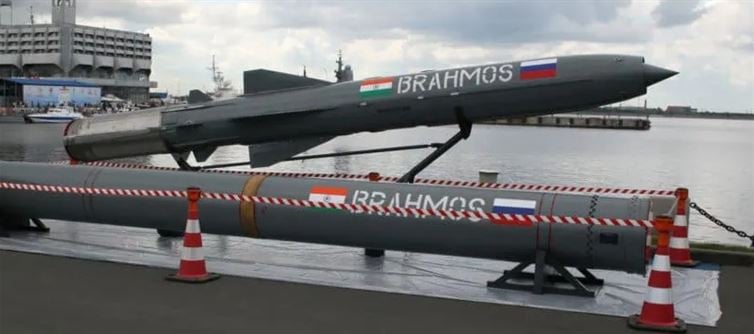
The UK and france created the long-range, air-launched precision strike weapons known as Storm shadow or SCALP-EG Cruise Missiles. These missiles, which are specifically made for deep-strike missions against highly valuable targets that are heavily guarded, have a range of more than 250 kilometers and are integrated with India's Rafale fighter jets. SCALP missiles have a low radar cross-section and a stealthy airframe. They employ inertial navigation and GPS to guide them mid-course and then terrain-matching radar and infrared homing to ensure terminal accuracy.
Each missile is equipped with a BROACH (Bomb Royal Ordnance Augmented CHarge) tandem warhead, which can penetrate underground infrastructure, command posts, and fortified bunkers. The capacity of SCALP missiles to conduct standoff operations without crossing international borders was demonstrated during Operation Sindoor when they were purportedly utilized to hit terror launch sites and infrastructure in Bahawalpur and Muridke with exceptional precision from within indian skies.
AASM HAMMER (Highly Agile Modular Munition Extended Range)
French precision-guided munitions known as AASM HAMMER (Highly Agile Modular Munition Extended Range) bombs, which are also installed on Rafale fighters, consist of a standard bomb body (250 kg or more) along with guidance and range-extension kits. These kits, which give the HAMMER day-and-night operation and precise attack capabilities, can include INS/GPS, laser, or infrared seekers. When launched from a high altitude, the AASM HAMMER may hit a variety of targets, including moving vehicles and reinforced shelters, with a standoff range of up to 70 kilometers. This reduces the risk of exposure for indian air Force pilots.
It is perfect for interacting with terrorist infrastructure that is well-hidden due to its high maneuverability and guiding flexibility. India was able to accomplish strategic effect in Operation Sindoor without causing civilian collateral damage by using HAMMER bombs to carefully target structures used by terrorist organizations for training and logistics operations.
SkyStriker Loitering Munitions or Kamikaze drones
The Israeli company Elbit Systems created the SkyStriker Loitering Munitions, sometimes known as Kamikaze drones, which are autonomous, precision-guided "suicide drones" that hover over a predetermined location before launching an explosive payload into their target. adani Defence manufactures these drones in India. The SkyStriker, which weighs around 35 kg and can carry a 5–10 kilogram warhead, may loiter for up to two hours at a range of 100 km. Convoys, automobiles, and leadership personnel are among the mobile or time-sensitive targets that these weapons are perfect for taking down because of their tactical precision design.
Before impact, they locate and lock onto targets using GPS and electro-optical guidance systems. SkyStriker drones played a pivotal role in Operation Sindoor by carrying out strikes with surgical accuracy and without endangering indian forces while striking terrorist assets that were hidden or in motion in difficult terrain. In addition to eliminating significant threats on the ground, its successful deployment in Operation Sindoor showed India's increasing superiority in unmanned precision warfare.
BrahMos Supersonic Cruise Missiles
With a top speed of Mach 2.8 to Mach 3.0, the Indo-Russian BrahMos Supersonic Cruise Missiles are one of the world's fastest cruise missiles. BrahMos can be fired from land, sea, or air platforms and have a range of 300 to 450 kilometers (with extended-range versions under development). Because of its sophisticated target detection and sea-skimming capabilities, as well as its inertial navigation system with satellite guidance, the missile is very challenging to intercept. It has a conventional warhead weighing between 200 and 300 kg and is meant to precisely kill valuable surface targets.
Defense experts surmise that BrahMos missiles might have been utilized for the quick and accurate destruction of vital infrastructure located deep within Pakistani territory, even if this has not been officially confirmed for Operation Sindoor. They are perfect for time-sensitive strike operations where impact and deterrence are crucial because of their great speed and destructive capability.
Harop Loitering Munitions
Israel Aerospace industries (IAI) Harop Loitering Munitions are another powerful weapon that india is said to have employed recently and maybe during Operation Sindoor. These drones, which carry a 15–20 kg explosive payload, are made to hover in the target region for a few hours before focusing on radar-emitting equipment or stationary infrastructure. The Harop is very effective in SEAD (Suppression of Enemy air Defenses) missions since it can independently detect and destroy air defense radars or missile launchers at a range of up to 1,000 km.
When taken as a whole, this arsenal shows India's increasing adoption of precision strike, network-centric, and stand-off capabilities, which enable it to combat adversaries in a variety of operational domains while lowering risk and collateral damage.




 click and follow Indiaherald WhatsApp channel
click and follow Indiaherald WhatsApp channel